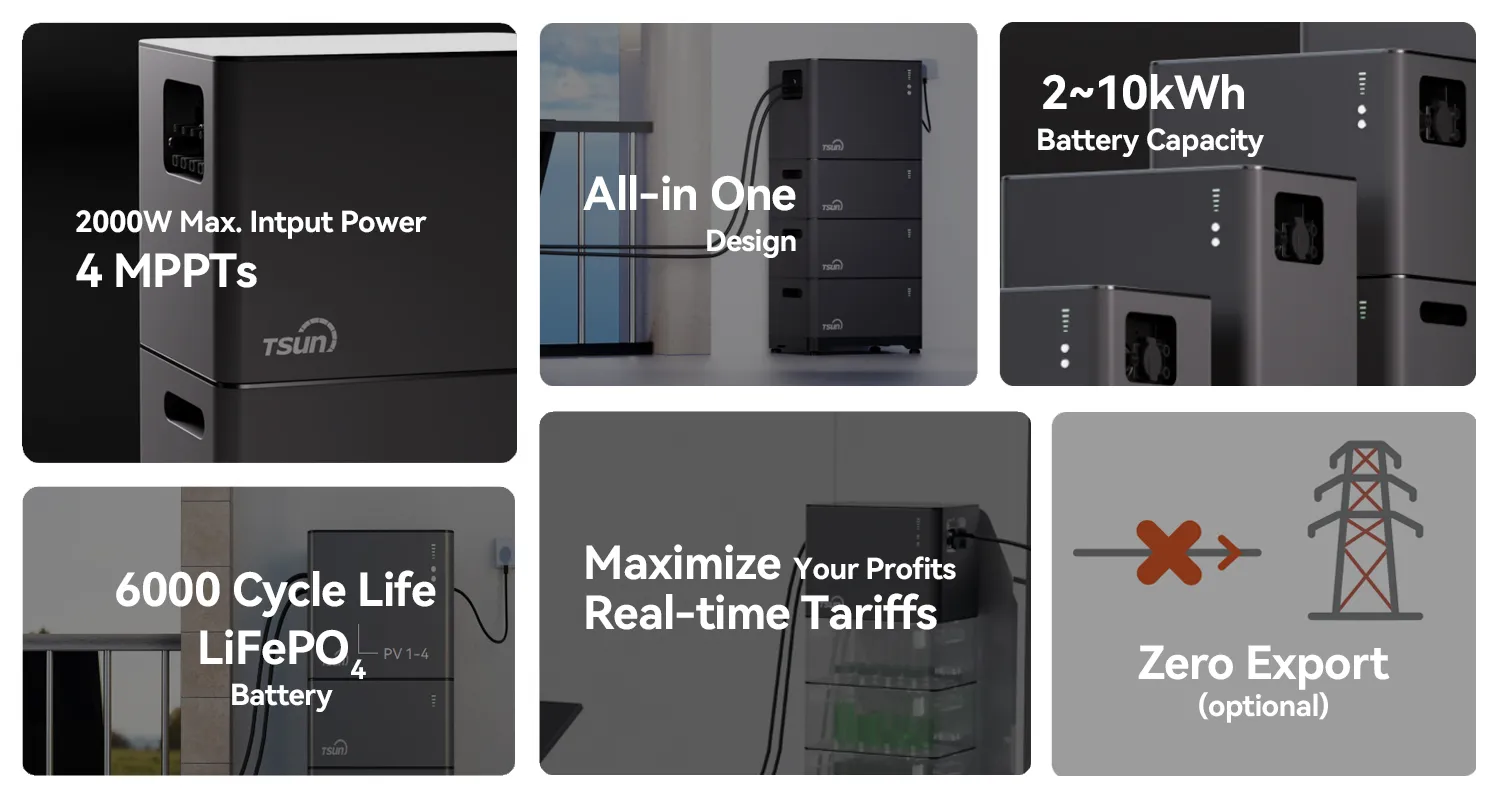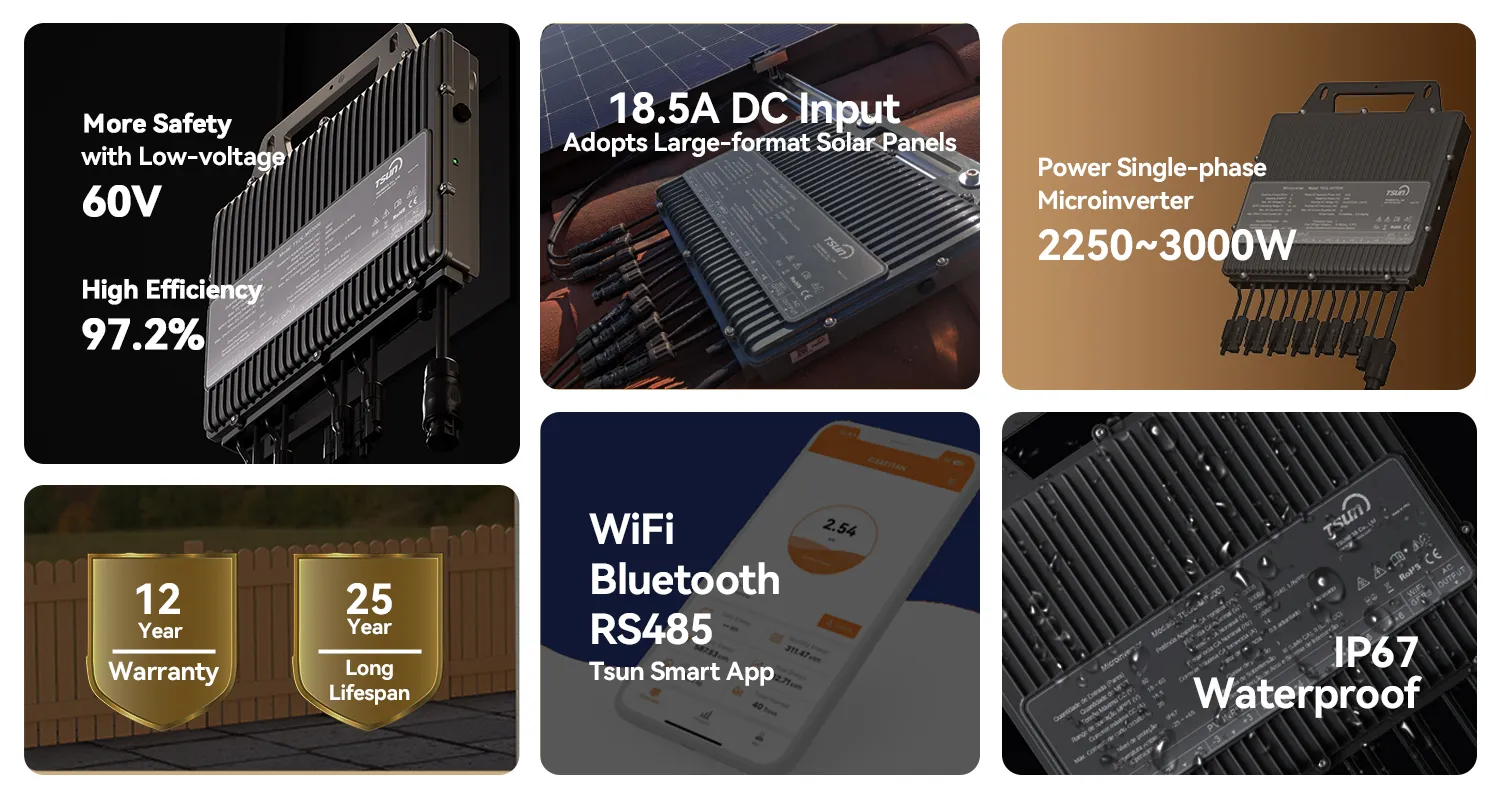Easy Solar Kit (with microinverter)
 LEARN DETAILS
LEARN DETAILS
 News
News
Table of contents

(micro inverter solar system design)
The evolution of micro inverter solar system design
has been instrumental in transforming the photovoltaic (PV) industry, especially as rising energy demands and grid modernization strategies take center stage around the world. Unlike traditional string inverters, which process the combined output of multiple panels, a micro inverter operates at the panel level, converting direct current (DC) to alternating current (AC) on-site. This granular approach enables higher efficiency, enhanced safety, and greater flexibility in system configurations. As energy systems become more distributed and the need for resilience grows, micro inverter solar system design is setting new benchmarks for reliability and performance.
The solar micro inverter design delivers several distinctive technical advantages over conventional centralized inverters. Firstly, by handling energy conversion per module, micro inverters eliminate single points of failure, improving system uptime and boosting power output by up to 30% in shaded, soiled, or irregularly oriented installations. Furthermore, advanced maximum power point tracking (MPPT) at the module level ensures optimal performance for every solar panel, no matter external conditions.
Another key benefit is enhanced safety. Micro inverters convert DC to AC immediately at each panel, thereby limiting hazardous high-voltage DC wiring and reducing fire risk—an essential compliance factor for standards such as NEC 690.12 in the United States. Additionally, these designs facilitate easier expansion of solar arrays, supporting flexible scaling from residential rooftops to large commercial systems. According to a 2023 report by the International Energy Agency (IEA), residential deployments using micro inverters achieved average system efficiencies of 96.5%, compared to 93.3% with traditional string inverters.
The global micro inverter market has demonstrated remarkable growth, supported by improved component reliability and declining hardware costs. By 2023, the worldwide micro inverter market exceeded USD 2.4 billion, with a projected compound annual growth rate (CAGR) of 15.2% through 2028, according to MarketsandMarkets. The surge is fueled by increased adoption in North America, Europe, and Asia-Pacific owing to their resilience during partial shading and module-level monitoring capability. For instance, in Germany’s 2022 residential PV installations, micro inverter adoption reached 41%, representing a 17% increase over the previous year.
The preference for micro inverter solar system design is notably pronounced in regions with complex roof architectures or stringent safety codes. Furthermore, utility rebate programs and updated installation guidelines are driving developers to integrate micro inverter solutions, especially in the context of smart grid deployments. As grid-tied solar systems grow, integrating storage and electric vehicle (EV) support, micro inverter architectures offer a seamless pathway to distributed, responsive energy systems.
Selecting the appropriate micro inverter solution requires a thorough evaluation of leading global manufacturers. The table below compares products from notable vendors, highlighting critical features such as maximum AC output, integrated monitoring, efficiency ratings, warranty periods, and typical cost-per-watt.
| Manufacturer | Model | Max AC Output (W) | Peak Efficiency (%) | Integrated Monitoring | Warranty (Years) | Estimated Cost (USD/W) |
|---|---|---|---|---|---|---|
| Enphase Energy | IQ8-M | 295 | 97.0 | Yes (Onsite & Remote) | 25 | 0.36 |
| APsystems | YC600 | 299 | 96.7 | Yes | 20 | 0.32 |
| Sparq | Q2000 | 480 (shared) | 96.1 | Optional | 10 | 0.29 |
| Hoymiles | HM-400 | 400 | 96.7 | Yes | 12 | 0.28 |
| NEP | BDEW | 350 | 96.0 | Optional | 12 | 0.27 |
While Enphase dominates in warranty and monitoring sophistication, companies like APsystems provide competitive efficiency and cost advantages, making them suitable for both commercial and residential projects. The right choice often hinges on project-specific priorities—be it lifecycle cost, monitoring detail, peak performance, or regional service support.
When developing or deploying systems using micro inverter reference design principles, customization is key. Reference designs offer a ready framework for rapid integration, typically including detailed schematics, tested MPPT algorithms, AC filtering, grid compliance circuitry, and communication modules for real-time monitoring. Custom adaptations focus on matching local grid codes (such as IEEE 1547 or IEC 62109), adapting to unique environmental challenges, and scaling for different module types (monocrystalline, polycrystalline, thin-film).
Another vital area is cybersecurity and data integrity, especially as remote monitoring and troubleshooting become standard features. Advanced reference designs now incorporate secure over-the-air firmware updates, encryption for data telemetry, and diagnostics tools for predictive maintenance. Tailoring these systems involves close collaboration between PV developers, electronics engineers, and utilities to ensure long-term reliability, minimal downtime, and regulatory compliance.
Powerline communications (PLC) and wireless protocols are additional customization points, as they play crucial roles in multi-site synchronization and scalable operational awareness. Lastly, the success of a micro inverter solution often relies on simulation and modeling at an early stage to optimize energy harvest, thermal management, and lifecycle economics.
Demonstrating the practical merits of advanced solar micro inverter design, case studies from various sectors underscore the adaptability and economic advantage of these systems. In a 2023 deployment in California, a decentralized micro inverter installation across 50 residential rooftops led to a 21% higher annual output compared to similar string inverter projects. This improvement stemmed from module-level MPPT, which compensated for diverse shading and roof orientations. The US National Renewable Energy Laboratory (NREL) confirmed that sites with individual panel monitoring achieved an average 12% reduction in service calls, translating to significant savings in both operational expenditure and customer satisfaction.
Commercial facilities with complex HVAC and shading challenges—such as a distribution center in Germany—have also benefited. The installation of 400 kW using micro inverters yielded system uptime above 99.7% over two years, despite frequent partial obstructions and soiling. Hourly power-loss tracking further enabled facility managers to promptly address performance anomalies, ensuring peak operational continuity for mission-critical operations. These examples reflect the tangible return on investment provided by granular inverter topologies.
Looking ahead, the future of micro inverter solar system design holds many promising pathways. Innovations such as integrated hybrid modules—combining micro inverters with module-level power optimizers—are emerging, targeting even higher yields and maintenance-free operation. Edge AI and embedded analytics are being incorporated to forecast failures, optimize dispatch, and better interact with smart grids and distributed storage systems.
Furthermore, the integration of micro inverters into energy communities and transactive energy networks elevates their relevance, bringing peer-to-peer power trading and grid stabilization within reach. As global energy systems decarbonize, micro inverter designs with higher power densities, omnidirectional communication, and plug-and-play architectures will seamlessly merge solar energy with emerging technologies such as bidirectional electric vehicle charging.
To remain competitive, manufacturers are investing in durability research, longer service life, and circular-economy design principles—using recyclable materials and reducing rare earth dependency. The rapid adoption of micro inverter architectures, propelled by regulatory endorsement and market-driven innovation, is set to redefine solar power generation for decades to come.

(micro inverter solar system design)

